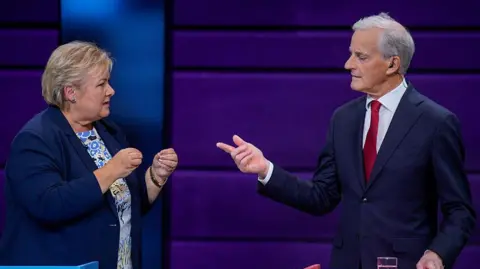As the federal election draws near, Australia's housing crisis has captured national attention, raising concerns amidst rising property prices and rental costs that have become increasingly unaffordable for many. According to reports, the average cost of a home has soared to nearly A$1.2 million in Sydney, with national house prices climbing approximately 39.1% over the past five years. Meanwhile, rental costs have surged by 36.1% since the onset of the COVID-19 pandemic, pushing struggling families to the brink of homelessness.
Both the Labor Party and the Liberal-National Coalition have acknowledged the crisis, promising to implement wide-ranging measures aimed at resolving the issue. The Labor Party plans to build 1.2 million new homes by 2029, while the Coalition commits to 500,000 new residences. However, experts caution that neither strategy is likely to adequately address the backlog of housing demand, which is also compounded by strict planning regulations and the long-term decline in public housing.
While some claim that immigration and foreign property buyers are key factors in driving up housing costs, experts argue otherwise, stating that the actual impact of these groups on the housing market is minimal. Moreover, the latest data indicates that homes purchased by foreign buyers composed less than one percent of all sales in the past year.
The respective promises of Labor and the Coalition vary in approach, with Labor endorsing shared-equity loans for first-time buyers and social housing improvements, while the Coalition favors reducing migration and placing caps on foreign investment. The Greens further advocate for rent freezes and tax reform aimed at investors.
However, critique towards both parties' solutions continues, with concerns voiced regarding the feasibility of meeting proposed housing targets and the potential implications of immigration cuts on future economic growth. Experts have expressed the need for a cohesive combination of policies from various parties to effectively address the multifaceted nature of Australia's housing dilemma.
As the election looms, it is clear that Australia's housing crisis will remain a central issue. Whether political pledges translate into tangible results will be a crucial factor in determining voter confidence and shaping the nation's future.
Both the Labor Party and the Liberal-National Coalition have acknowledged the crisis, promising to implement wide-ranging measures aimed at resolving the issue. The Labor Party plans to build 1.2 million new homes by 2029, while the Coalition commits to 500,000 new residences. However, experts caution that neither strategy is likely to adequately address the backlog of housing demand, which is also compounded by strict planning regulations and the long-term decline in public housing.
While some claim that immigration and foreign property buyers are key factors in driving up housing costs, experts argue otherwise, stating that the actual impact of these groups on the housing market is minimal. Moreover, the latest data indicates that homes purchased by foreign buyers composed less than one percent of all sales in the past year.
The respective promises of Labor and the Coalition vary in approach, with Labor endorsing shared-equity loans for first-time buyers and social housing improvements, while the Coalition favors reducing migration and placing caps on foreign investment. The Greens further advocate for rent freezes and tax reform aimed at investors.
However, critique towards both parties' solutions continues, with concerns voiced regarding the feasibility of meeting proposed housing targets and the potential implications of immigration cuts on future economic growth. Experts have expressed the need for a cohesive combination of policies from various parties to effectively address the multifaceted nature of Australia's housing dilemma.
As the election looms, it is clear that Australia's housing crisis will remain a central issue. Whether political pledges translate into tangible results will be a crucial factor in determining voter confidence and shaping the nation's future.




















